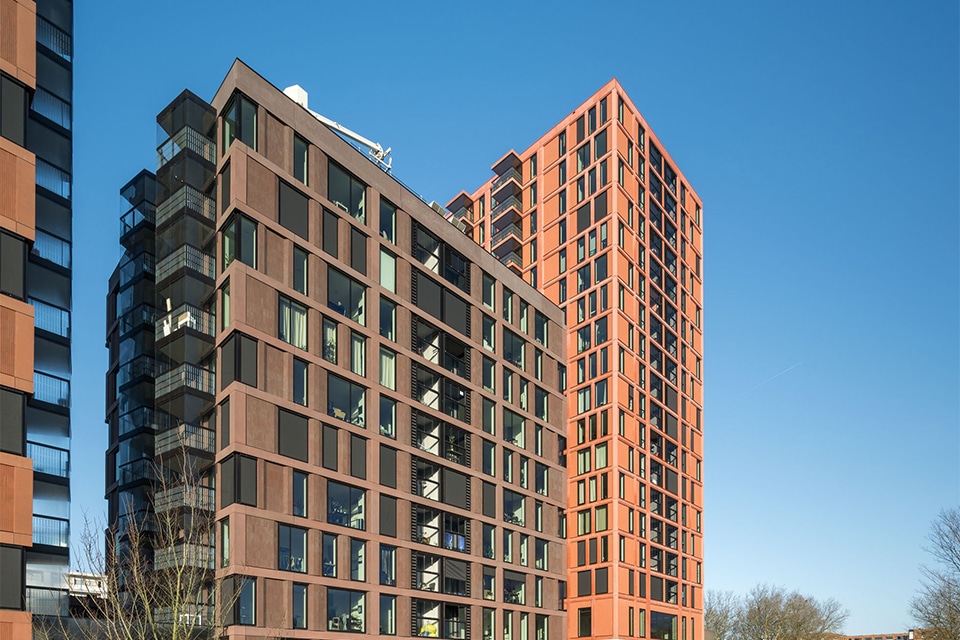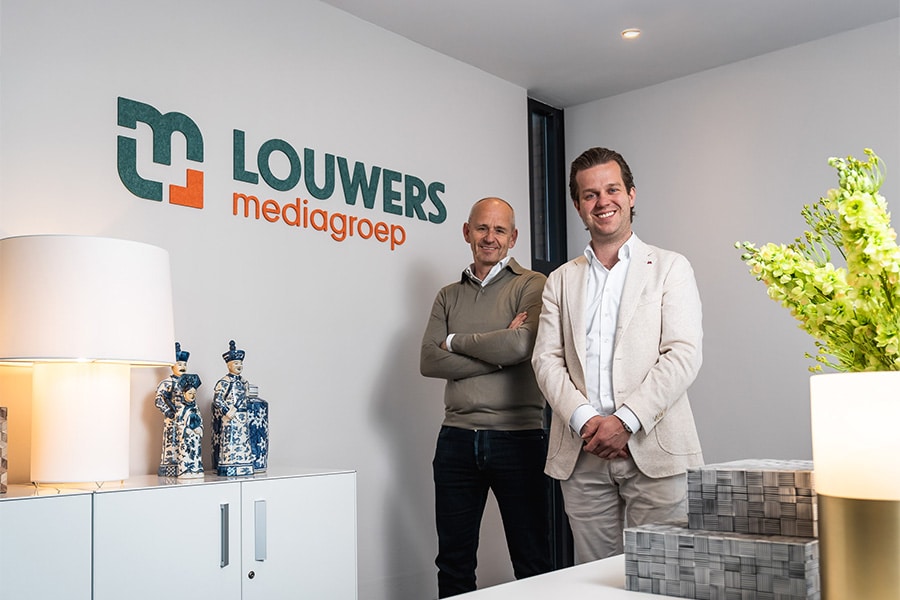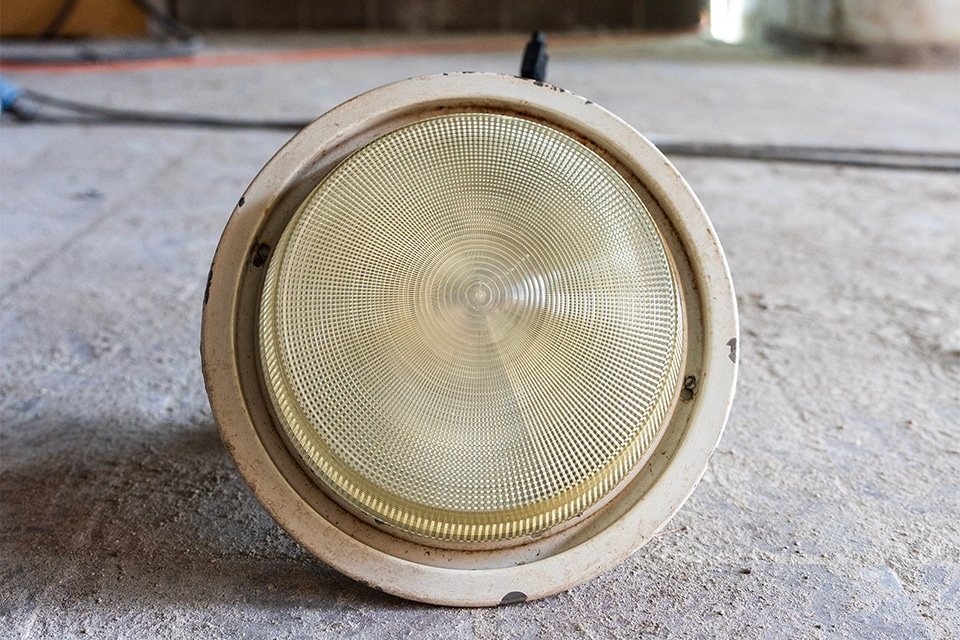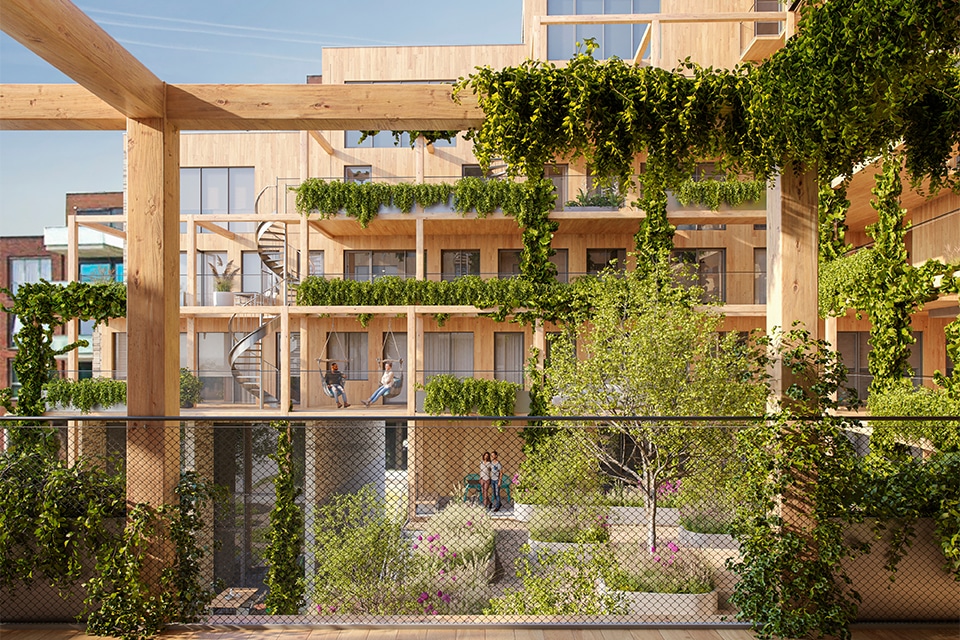
A completely closed aluminum loop
Profiles of recycled windows, doors and façade systems
In the route to a circular economy, manufacturers will start to make a difference. So says Danny Decaluwaert, Project Manager East at Hydro Building Systems. "Only when manufacturers have a clear overview of their supply chain, work with traceable materials, invest heavily in waste avoidance, reuse and recycling and ensure independent and fair certifications, will the wheat really be separated from the chaff and we can achieve a closed material cycle." Hydro Building Systems, known for its SAPA and WICONA brands, likes to take the lead in this by collecting, processing and recycling aluminum scrap entirely in-house for equivalent reuse.
As of this writing, Hydro Building Systems is buying up post-consumer scrap in projects in-house. This involves old windows, doors and façade systems that have reached the end of their technical lifespan, Decaluwaert says. "At a later stage, pre-consumer scrap (sawing residues/production waste) from customers will also be added to this. By recycling both aluminum waste streams high-quality and within Europe, damage at the extraction site, depletion of non-renewable raw materials, consumption of non-renewable energy as well as greenhouse gas emissions are significantly reduced. This makes our aluminum products much more environmentally friendly than primary aluminum."

Sustainability is key
"Sustainability is key within our organization," Decaluwaert emphasizes. "We take our responsibility in the entire value chain of aluminum production and want to contribute to a just society and a circular economy, through responsible production, circular products and complete decarbonization of our processes by 2050 or earlier. To achieve this, we want to grow even further in renewable energy production, the use of externally certified low carbon aluminum and the recycling of post-consumer and pre-consumer scrap. The goal for this year is to roll out this ambition further. Both within our company and towards our relations. From facade builders to clients and architects."
Close-the-loop
High-quality recycling of post-consumer aluminum has long been Hydro's core business. "What is new is that we will now also buy up post-consumer and pre-consumer scrap from our customers in-house," Decaluwaert said. "This again makes us a pioneer in the market and allows us to involve our relations even more actively in our circular ambition. Moreover, we can let them experience how valuable aluminum scrap actually is." Buying post-consumer scrap in-house ensures a constant supply of valuable aluminum scrap, he says. "The in-house procurement of post-consumer scrap also gives the opportunity to give large volumes of aluminum an equivalent second life. In doing so, we guarantee that old aluminum windows become new aluminum windows again, old aluminum doors become new aluminum doors again and old aluminum facades become new aluminum facades again. Our supply chain is clear, transparent and comprehensible to everyone and can be traced perfectly to the source. This is how we complete the sustainability circle."

Keeping valuable scrap metal in Europe
Aluminum can be fully recycled, without loss of quality or material properties, provided the recycling is high quality and according to the latest technology. "According to estimates, some 5 million tons of post-consumer aluminum is available annually in Europe, which can be 100% reused," Decaluwaert knows. "But we live in a free scrap market and are losing almost half of this to countries like China. We would like to turn this tide, by encouraging customers to keep, process and recycle aluminum ín Europe. This is not only better for our industry, but also for our green transition and jobs."
Pilot Project
The socialist writer Bertolt Brecht once said "Erst kommt das Fressen, dann kommt die Moral. "So is the case with post-consumer aluminum recycling," Decaluwaert believes. "That's why we pay customers a fair price. Moreover, at the project level, take-back guarantees are increasingly becoming part of the contract. However, this requires the noses of all stakeholders to be pointed in the right direction. In addition, the permits and logistical and administrative processes must be in perfect order for this. A pilot project is currently being carried out in Brussels, in which we are testing this in detail."
Significant CO2 savings
With current processes, the production of primary aluminum requires a large amount of energy, Decaluwaert knows. "This translates into abundant CO2 emissions (when using fossil fuels for energy production; the main greenhouse gas and the direct cause of climate change). By melting post-consumer aluminum, up to 95% of this energy can be saved, while thanks to high-quality recycling, a raw material of exactly the same quality can be obtained." The average carbon footprint of aluminum consumed in Europe is 8.6 kg of CO2 per kg of aluminum, he knows. "Hydro goes a considerable step further in this respect. For our profile systems, we work as standard with Hydro CIRCAL 75R, which contains 82.1% of post-consumer scrap and has a CO2 footprint of only 1.9 kg CO2 per kg aluminum. On request, Hydro CIRCAL 100R is additionally available for projects, with a CO2 footprint of less than 0.5 kg CO2."
Exactly the right alloy
All aluminum scrap collected by Hydro undergoes rigorous selection, he stresses. "It is purified over several successive steps. Our plant in Dormagen was the pioneer here and has developed a specific technique that effectively separates aluminum from other materials such as plastics, glass residues, steel, magnesium, manganese, copper, zinc, silicon, titanium and chromium. In addition, post-consumer and pre-consumer scrap metal is collected and processed separately. The recycled aluminum (aluminum chips) is transported with exactly the right alloy to our smelter in Clervaux, where it is finally de-lacquered. It is then fed into the smelter and CIRCAL billets are cast to manufacture new and high-quality SAPA and WICONA profile systems." The entire recycling process is externally certified by DNV-GL. The high-quality recycling process, which was fine-tuned in Dormagen and Clervaux, has been and is now being
rolled out to new Hydro recycling sites in Europe, the UK and the US.



